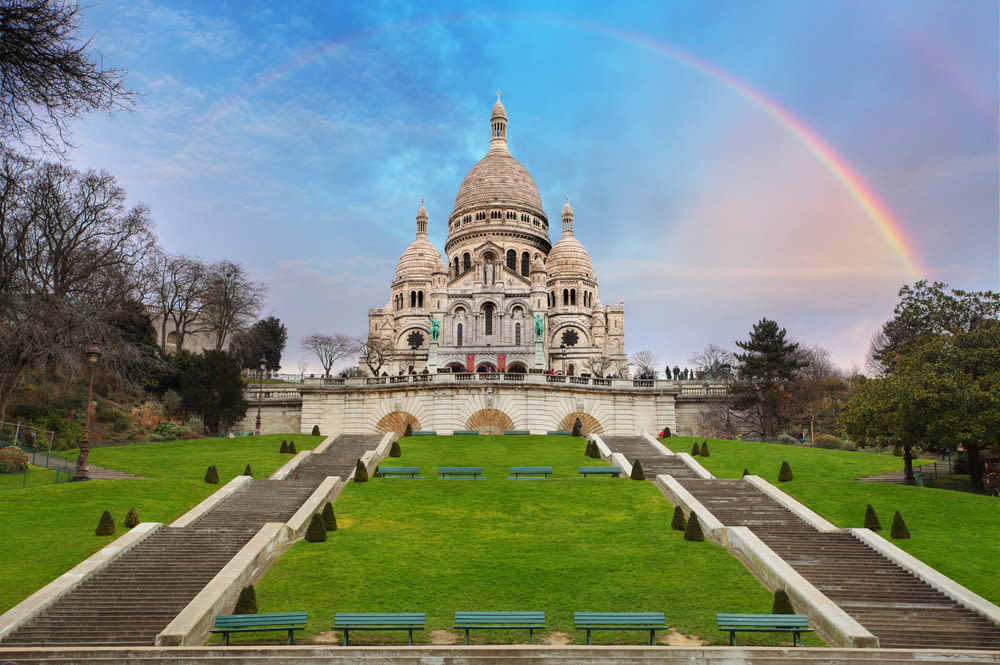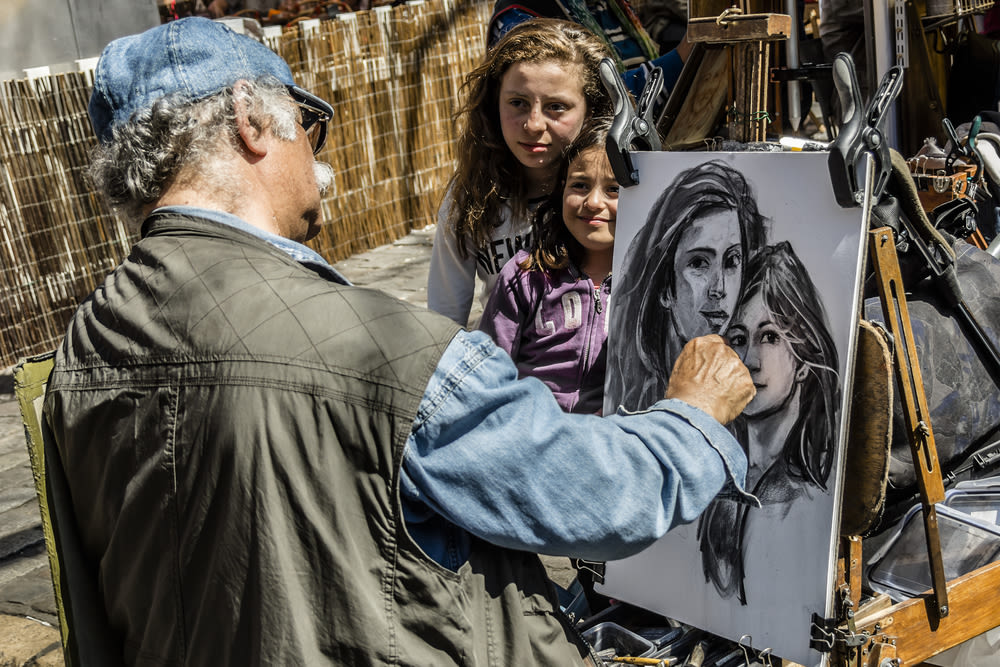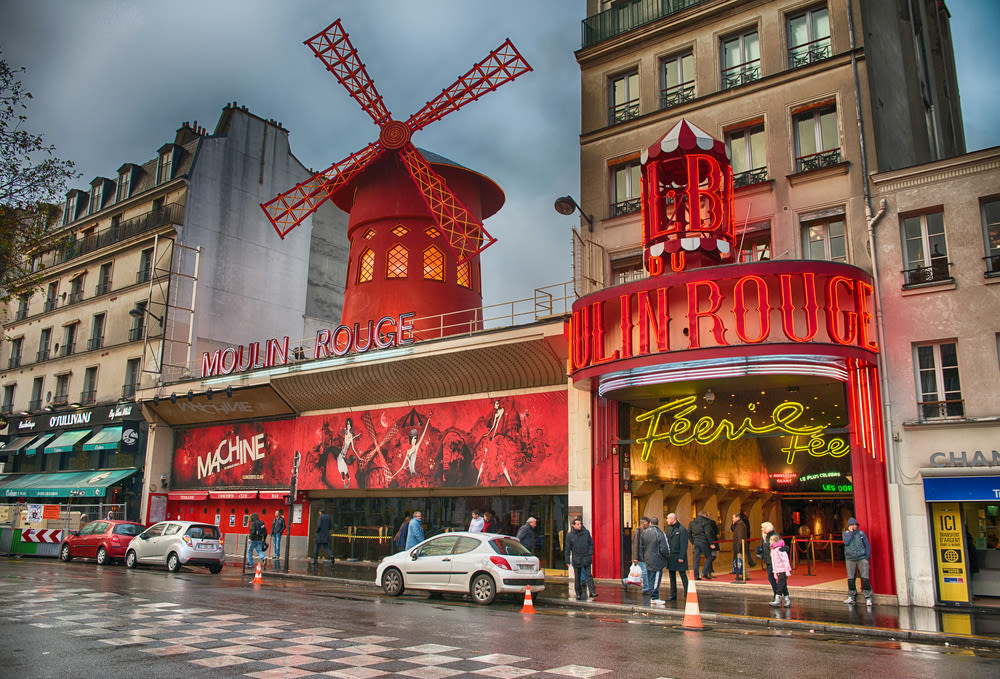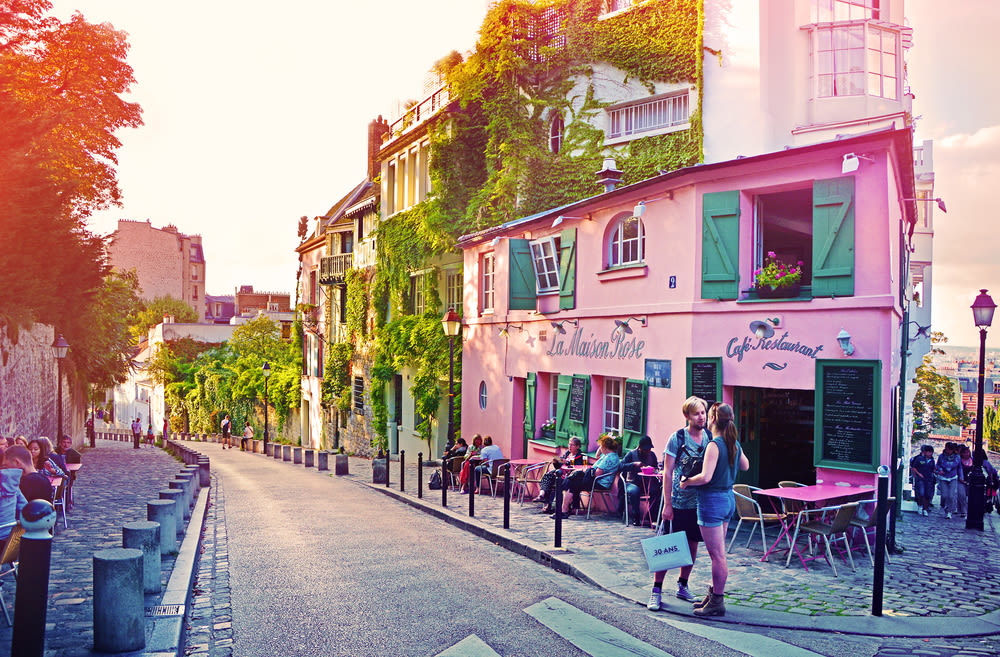Montmartre: The Other Paris

The Basilica Sacre Coeur at the top of the hill in Montmartre.
Image: Shutterstock
I was walking along Rue Lepic, telling my traveling companion how much I loved this particular area of Paris. After all, I explained, Van Gogh had lived with his brother on the same street we were walking, Gaugin and Degas had painted masterpieces a few doors down, and La Chat Noir, France's most famous nightclub of the 1800s, had been re-imagined and reassembled in its original spot. As I was in the midst of explaining why the little neighborhood was my favorite place to stay in Paris, a stranger next to us suddenly blurted: "Montmartre isn't Paris! It's its own special place." Intrusion aside, he was right.
Paris always has seemed to me to lack the intimacy of some of my favorite cities: Bruges, Venice, Strasbourg, Amsterdam. Walking to its attractions is nearly impossible, as its sites are scattered far enough apart to wear out any metro card. Montmartre, meanwhile, has a more local feel than the rest of Paris. Sure, the area has its share of sex shops, burlesque shows and people who look eerily like Keith Richards, but take time to explore the side streets and you'll be richly rewarded. And even if you aren't the adventurous type, Montmartre is home to two huge Parisian attractions that don't require getting off the beaten path: the Basilica of the Sacré Cœur and, of course, its crown jewel, the Moulin Rouge.
The Basilica is one of the must-sees of Paris. Visiting the area is not necessarily about the church itself, but rather the walk up the hill, the peak of which provides an unrivaled view of Paris. It's a great place to start your morning or watch the sunset. The cobblestone streets nearby might lead to the biggest tourist trap in Paris, but at least it's a fun tourist trap, with small sidewalk cafes serving escargot, crêpes, French onion soup, quiche Lorraine and all the other stereotypical Gallic cuisine you came to eat. The waiters are actually nice and don't make you feel like you're an annoying tourist even when you are. Musicians play solo concerts on the street for tips or CD sales. What's not to love?

Street artists are everywhere in Montmartre.
When you think of art being created on a street, Paris might be a likely place that you picture in your mind. Throughout Montmartre, there is no shortage of Parisian artists that can paint you, sketch you, or cut an instant silhouette of your profile faster than you can order a crêpe. Imagine sitting in a cafe while a goateed Frenchman wearing a beret creates a masterpiece starring you! It sounds cliché, but cliché is a French word after all; when in France, give in to it. If art isn't your thing, the nearby shops will be happy to sell you little music boxes that play La Vie en Rose, silk scarves, berets, magnets and everything else that might seem remotely French.
Moulin Rouge translates literally to "red windmill," which helps explain the large red windmill rotating endlessly in front of the one of the world's most famous and timeless venues. The club is open seven nights a week and typically runs two shows a night. I wasn't sure what to expect from a show like this. Would it be anything like the movie named after it? Would I be subjected to hours of can-can dancing? It turns out that the Moulin Rouge had a great variety of acts in its "Féerie" show—a total of 80 artists, in fact—and I was both pleasantly surprised and never bored.

The famous Moulin Rouge lives on.
Image: Shutterstock
Féerie is a burlesque show at its core, so it's not exactly family friendly, yet it's also not particularly erotic despite the bare-breasted dancers flitting around. The show is about the music, the dancing, the costumes and the novelty acts that connect everything together—everything, in this case, being a unique juggling performance, ventriloquist act, amazing skating cirque performers and 50 dancers in costumes filling the stage at any given time. It even included a woman swimming with giant pythons wrapping around her in a giant clear aquarium. It was a little bit of Vegas, yes, but stayed true to its French roots. There's also an early show and an 11 p.m. show if you don't want to have your entertainment cutting into your sightseeing.
Fans of the hugely popular French film Amélie may recognize their surroundings in Montmartre; no surprise, as much of the movie was filmed on the street that borders Moulin Rouge at a little cafe called Café des 2 Moulins. The cafe is still there, sans Amélie herself, though you'll also find lots of other small cafes nearby as well as bakeries and fruit stalls, their tubs brimming with ripe red strawberries and giant sheaves of plump white asparagus. Venture down a side street and find a bar that serves absinthe, the drink of choice for the artists that roamed the same streets in the 19th century (though you may have to consume quite a bit of the stuff to see the famed green fairy).

The renowned La Maison Rose in Montmartre at sunset.
Image: Marina99 / Shutterstock.com
Le Chat Noir was the most famous nightclub in Montmartre and the place to be seen if you were in Paris in the late 1800s. Originally opened in a small, two-room site in 1881, it later moved to larger accommodations at 12 Rue Victor-Masse in 1885; it moved a third and final time to 68, Boulevard de Clichy, finally closing in 1897 after a short but smashing run. Pablo Picasso was reportedly devastated when he arrived in Paris only to discover Le Chat Noir had shut its doors before he'd had an opportunity to visit. You can't a good name down for long, though, and Le Chat Noir was eventually rebuilt and updated for the times at 68, Boulevard de Clichy, where today it's home to live jazz bands and that famous black cat, plastered everywhere.
Montmartre has some of the most reasonably priced hotels in Paris and it's only 15 minutes from Notre Dame. Stop in for a night or two and get lost on the narrow backstreets and see a show at the Moulin Rouge—or even stay at the Hôtel Le Chat Noir itself. You'll discover an entirely different Paris.




